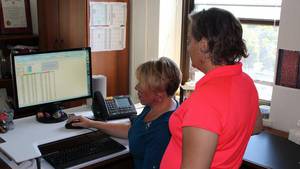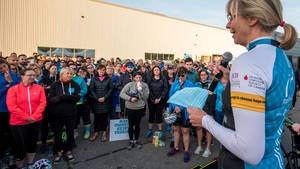When members of the QEII’s Nova Scotia Rehabilitation Centre team went to Haiti in November 2009 to conduct a survey of the experiences of people with disabilities in that country, they had no way of knowing that just two months later a devastating earthquake would strike the nation.
While the event has had catastrophic effects on the nation to this day, it also provided a rare opportunity for the QEII team to explore the experiences of people with disabilities before and after the January 12, 2010 earthquake.
“How often can you measure something before and after an earthquake, and share that information with the broader community to look at what is needed in an under-resourced country, and how to address the needs of people in their communities who have disabilities?” asks James Adderson, program manager, Rehabilitation and Supportive Care at the QEII Health Sciences Centre.
That opportunity is the subject of a research article published in the September 2015 issue of the journal ‘Archives of Physical Medicine and Rehabilitation.’
“I’ve been volunteering in Haiti since 2005, with Team Canada Healing Hands clinics,” James says. “In early 2009, we started to talk about how we could look at the impact of what we do when we go to Haiti.”
In 2009, James met with colleague and rehabilitation engineer Kim Parker. They examined available tools and worked to determine which would be best for the people they saw in Haitian clinics.
“The World Health Organization has a disability and assessment scale that has been used all over the world in developed and less resourced settings,” Kim explains. “It looks at all aspects of health status and we thought it would be a great first step to pilot it in Haiti.”
James says they knew an assessment tool would be helpful in determining what difference they were making as medical volunteers in Haiti.
Armed with the survey tool WHODAS 2.0 (World Health Organization Disability Assessment Schedule 2.0), the team interviewed survey participants in Haiti from November 9 to November 13, 2009.
“The WHODAS 2.0 has been shown to be a reliable and valid measure of function and disability across different health conditions, cultures, ages and sexes,” noted the team’s published study.
When the earthquake struck the country two months later, researchers knew the second phase of their study would be quite different from what they had anticipated.
“This was a once-in-a-century opportunity. We had administered a tool right before a major earthquake and were going to again after the earthquake,” James says.
“It changed our focus a bit. We went from ‘Are we making a difference’ to ‘Does the survey instrument change in response to a national disaster like an earthquake?’.”
Kim says the results from the second phase of their survey indicated the earthquake did have a negative impact on people living with disabilities in Haiti.
“We found that activities involving infrastructure such as getting around, performing household tasks or participation in community activities worsened after the earthquake while there was no change in their self-reported ability to get along with others or self-care,” says Kim. “We think that says something about the resilience of individuals and the ability to cope with change.”
The team came up with a plan to share their findings with their Haitian partners, other non-governmental organizations in Haiti, and the Haitian government. One of their key points was to look at strategies to be more inclusive of people with disabilities as the country continues to recover and rebuild from the earthquake.








